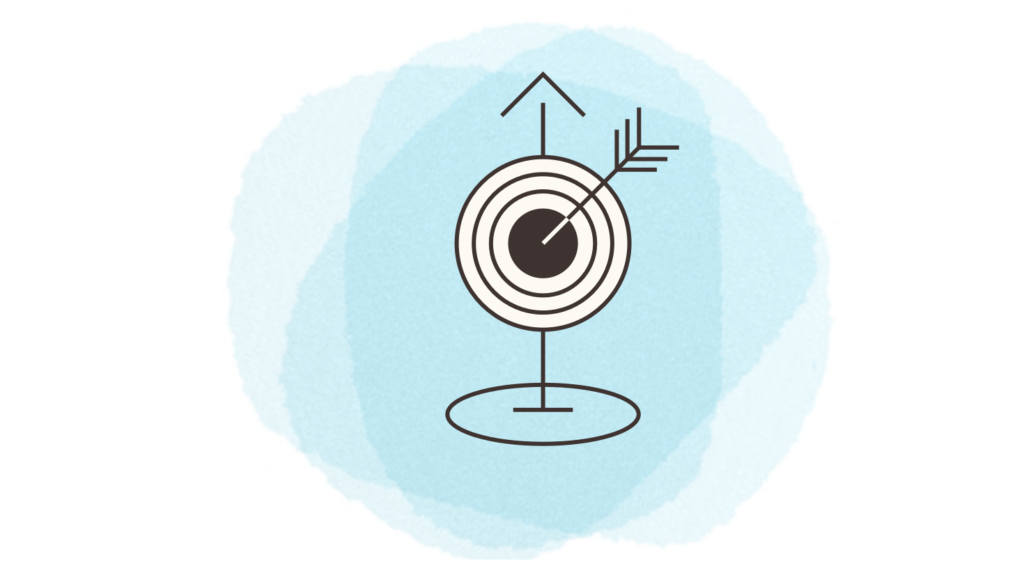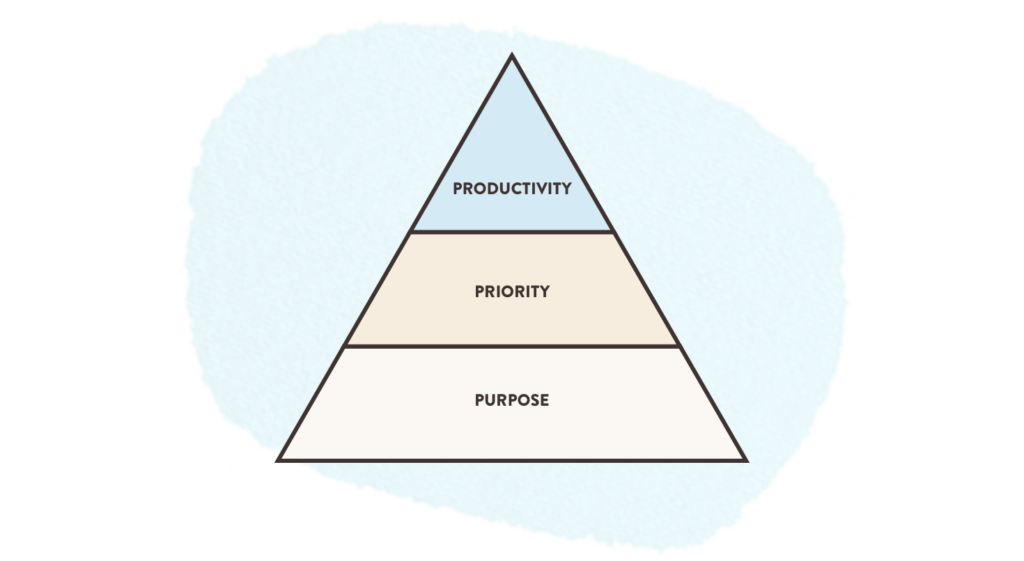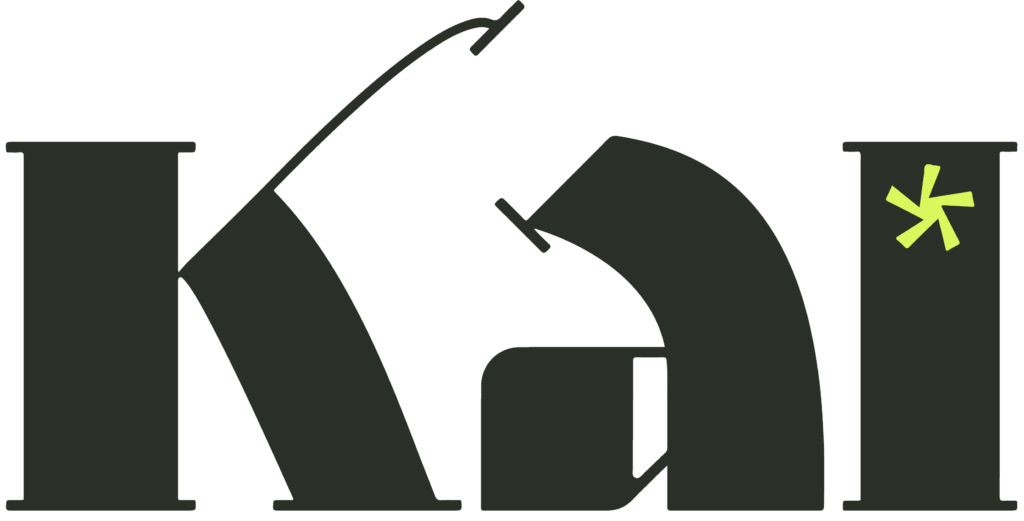Where are you headed? Why do you want to go there? What are you prepared to give up in exchange? If you’re looking for a guide to chart your path and help you stay on course, the One Thing book is among the best in our era of information overload.
Information overload is defined as: the difficulty in understanding an issue and effectively making decisions about it when you have too much information, and is generally associated with the excessive quantity of daily information.
Raise your hand if it sounds familiar. ✋
Information overload is also one of the key reasons humans evolved as storytellers. Stories send a signal to your consciousness that says – among the million other sensory inputs you’re getting right now – pay attention to 👉 this and give it meaning.
The meaning-making mechanism in each of us is mysterious and beautiful. It’s also the key determinant of how likely we are to feel fulfilled in our lives, so figuring out your One Thing is a big deal. This article clearly outlines how to do it.

Finding your ‘One Thing’ (the joy of single-tasking)
Many books have been written about strategies for achieving success, and like most things in life, the best ones are brilliant in their simplicity. Such is the case in Gary Keller and Jay Papasan’s book: The ONE Thing: The Surprisingly Simple Truth Behind Extraordinary Results.
In a distracted modern world that prizes multi-tasking, the One Thing book is an ode to the benefits of prioritization and singular focus. And not just in terms of achieving your goals, but also as a way of aligning with your values and increasing wellbeing.
“Live with purpose and you know where you want to go. Live by priority and you’ll know what to do to get there.”
Gary Keller
Think of your goals like an iceberg: productivity is just the tip at the top that you can see. Priority forms the first layer that keeps your productivity grounded. Like a good life lesson, it compels you to look at the deep, meaningful core that motivates you to actually achieve your goal – which is purpose.

Purpose protects your wellbeing because it gives you a reason to keep going when obstacles are placed in your path. Note: obstacles will always be placed in your path – it’s part of why we’re here.🤷🏻♀️
Even if you have other productivity systems in place, you can still practice those outlined in the One Thing book to continually define for yourself what really matters.
As an international best-seller that has been translated into 26 languages, and sold millions of copies, this method clearly resonates with the pain and frustration that many people experience in fighting distraction, trying to do too much, and ending up with little to show for it.
Finding your One Thing is an iterative process, but it always starts with asking questions. As Keller states in the book:
“Answers come from questions, and the quality of any answer is directly determined by the quality of the question. How we phrase the questions we ask ourselves determines the answers that eventually become our life. Good questions help you ignore what is doable and drill down to what is necessary, to what matters. It leads you to the first domino.”
Though the One Thing book is primarily intended for business, it can be applied to other areas of your life as well, including: relationships, finances, learning, physical health, and spirituality.
The big picture question: getting to the heart of the matter
It helps to think of your big One Thing as a goal that is five years or more down the line. That’s because in order to have the faith that we can accomplish something, we often need to frame and anchor it in a span of time that feels more believable.
Let’s say your big ‘what’ is to launch your own plant-based yogurt company and build it into a five-million dollar business. Regardless of what that actually entails, if you’re like most people, you’ll need to “prime” your subconscious into believing that within enough time, this goal is achievable for you.
With that in mind, the first question to answer when applying the methods in the One Thing book is the big-picture question:
“What’s my One Thing?”
If the big-picture question is currently too challenging, you can try breaking it down into more manageable questions.
For example: What drives you? What inspires you to start the day and keeps you going when you’re tired and worn out? What is the One Thing you want your life to be about more than any other?
‘What’ questions are fueled by ‘why’ questions‘ (remember, humans are meaning-making machines).
So if asking ‘what’ leaves you stuck, try asking why you’re excited with your life. Why you’re doing what you’re doing. Why pursuing your goal matters to you. Ask yourself this question enough times and you’ll inevitably be led to some unique sense of creative contribution in the world. You may be blocked from sensing it, or afraid to admit it – even to yourself.
But don’t worry: it’s impossible to miss your life’s purpose. 🙂
You can, however, miss out on consciously co-creating that purpose and enjoying the process. By asking these focusing questions on a regular basis, and remaining open to receiving and accepting the answer, you can help avoid that from happening.
The focusing question: charting the path from right now to your big ‘One Thing’
Once you’ve got your big ‘what’, the next step is to break it down into smaller chunks and reverse-engineer your course of action.
For that you ask the focusing question:
“What’s the One Thing I can do such that by doing it, everything else will be easier or unnecessary?”
Depending on where you’re currently at in achieving your big ‘what’, it helps to look at your focusing question in the following time frames: your 12-month goal, then your 90 day goal, your 30-day goal, your weekly goal, your daily goal, and then your ‘right now’ goal.
‘Most people overestimate what they can do in a day and underestimate what they can do in a year’, says motivational speaker Matthew Kelly. So make your 12-month goal big and specific and your daily goal tightly focused. Do this once, and then maintain the process as follows:
*Ask yourself this question every day – preferably first thing in the morning.
*Keep your 12, 90, and 30 day goals in your journal for clear reference and look at them daily (wait, you don’t have a journal…?)
*Set aside time once a week to reassess and plan.
*Make sure to track your gains, not just your gaps. This will give you the confidence to keep going.
*Enjoy the process, try not to get attached to the outcome.
Remember, the beauty of this system is in its simplicity.
Time blocking is the One Thing’s secret weapon
Time blocking is the concept of literally blocking out time in your calendar in order to make sure that you work on the most important thing – your One Thing. If you don’t time block, it’s easy for ‘urgent’ but less important things to take over. You can have a daily time block for recurring tasks (recommended), as well as time blocks for specific projects. According to Keller, “Everything else—other projects, paperwork, e-mail, calls, correspondence, meetings, and all the other stuff—must wait.”
Keller recommends to start with time blocking vacation for rest and recovery, as well as time blocking your planning time.
From there, he recommends a daily time block with four hours of uninterrupted work – preferably in the morning when our thinking is at its sharpest. That is assuming you’re getting enough sleep. (If you’re not, try asking Kai about the importance of prioritizing sleep. )
Remember this: It takes an average of 23 minutes and 10 seconds to get back into flow with every interruption. Every email, every messenger chat, every social media feed swipe. So be sure to put your phone on airplane mode and sign out of any notifications for social media or messenger when you time block.
What does science say about the principles in the One Thing book?
Keller’s belief in the One Thing is rooted in the Pareto Principle, also known as the 80:20 ratio of cause-to-effect, which predicts that 80% of effects come from 20% of causes. As Keller states: “If disproportionate results come from one activity, then you must give that one activity disproportionate time.”
By keeping you engaged on your single-most important task at any given moment, the One Thing is a powerful tool for avoiding the pitfalls of information overload, which is linked to all kinds of negative outcomes for our mental health, including:
*Decision fatigue
*Attention deficit trait
*Continuous partial attention
*Information addiction
Human limitations in processing information have always been a challenge, even before the digital age, but the amount of information that people are tasked with processing today is exponentially beyond anything we’ve experienced in previous generations.
According to Daniel Levitin, McGill University psychology professor and author of “The Organized Mind: Thinking Straight in the Age of Information Overload”:
*We’ve created more information in the last 10 years than in all of human history before that.
*Americans took in five times as much information every day in 2011 as they did in 1986.
And if nothing else, focusing on your One Thing is simply likely to make you happier.
“Ask the wrong question, get the wrong answer. Ask the right question, get the right answer. Ask the most powerful question possible, and the answer can be life altering.”
Gary Keller
According to Dr. Martin Seligman, widely considered the founder of modern positive psychology, there are five factors that contribute to our happiness: positive emotion and pleasure, achievement, relationships, engagement, and meaning. Of these, engagement and meaning are the most important.
Using methods in the One Thing book will help you consistently experience engagement and meaning in whatever tasks you undertake.
FAQs about the One Thing
What if I don’t know my One Thing?
If you keep drilling down into your why’s for long enough, your big ‘what’ will emerge. It may change over time, but you work with what feels right, right now.
How can I be certain that pursuing my One Thing will succeed in helping me get what I want?
There is no certainty in life 🙂 But when you know you’re ‘why’, and pursue it with singular focus, you’ll enjoy your journey no matter what – and significantly increase the chances of actually getting what you want. In Buddhism, this concept is referred to as ‘non-attachment’.
What about work-life balance? Does practicing the One Thing threaten that?
Keller says this: “We hear about balance so much we automatically assume it’s exactly what we should be seeking. It’s not. Purpose, meaning, significance – these are what make a successful life.”
Okay, I hear you, but how does that impact my relationships or personal life?
Practicing with the One Thing book can also be applied to your family and friendships. It means that when you’re not working, you actively choose to give all your attention to the people you’re with, or to the personal goal that you’ve set for yourself.
What if I can’t time block enough hours in the day to focus on my One Thing right now?
Finding time to focus on your One Thing isn’t meant to be easy. It will likely require making changes in how you manage your time with yourself and others. But if you honestly desire to co-create your life’s purpose – you will find a way to make the shift.
“There is an art to clearing away the clutter and focusing on what matters most. It is simple and it is transferable. It just requires the courage to take a different approach.”
George Anders
To summarize, the One Thing book is a powerful ally in a world that is driven by distraction. Only you can choose to take back control of where to place your attention. As Keller says, “If you try to do everything, you could wind up with nothing. If you try to do just ONE Thing, the right ONE Thing, you could wind up with everything you ever wanted.”
How you can use Kai to turn the One Thing into a powerful daily habit
Kai reminds you to consciously choose your one thing every day, as part of the morning flow routine. Variations on the core focusing question are added for context to help you crystalize your values and vision, as well as to address different areas of your life. You can also use Kai’s journal to keep track of your one thing statements and reflect on them regularly.
Here are some examples of the One Thing from the morning flow routine:
What’s the One Thing you’ll focus on to make today great, and how is this connected to your core values and what matters most to you? 💗
What’s the One Thing you’ll focus on to make today great, and how is this connected to your higher vision and purpose? 🧿
What’s the One Thing you’ll focus on to make today great, and how can you make this clearer and more measurable? 🎯
What’s the One Thing you’ll focus on to make today great, and if you secretly knew a way to get there faster, what would it be? 🔮
What’s the One Thing you’ll focus on to make today great, and what about it frightens you? 🙈
References
- The ONE Thing: The Surprising Simple Truth Behind Extraordinary Results | Gary Keller and Jay Papason
- Death by Information Overload | Harvard Business Review
- 10 Steps to Conquering Information Overload | Forbes
- Do You Suffer from Decision Fatigue? | New York Times
- The Cost of Interrupted Work: More Speed and Stress | Dept. of Informatics, UC Irvine
- Overloaded Circuits: Why Smart People Underperform | Harvard Business Review
- Beyond Simple Multi-tasking: Continuous Partial Attention | Linda Stone
- Email Apnea: Breathing Meditations for the Workplace | Psychology Today
- Common Neural Code for Reward and Information Value | PNAS





